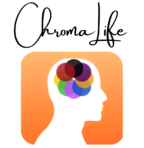[read-time]

Table of Contents
- What are Personality Color Assessments?
- Personality Colors
- Understanding the OCEAN Model
- The OCEAN Model – Big five Personality Traits
- Bridging Personality Colors with the OCEAN Big five Personality Traits
- 3 Actionable Steps
- The Takeaway
- FAQs
- What does OCEAN stand for in the Big 5 personality test?
- Can my Big 5 personality traits change over time?
- How long does it take to complete a Big 5 personality test?
- Are there any criticisms of the Big 5 model?
- How is the Big 5 used in professional settings?
- Can the Big 5 predict job performance or success?
This article delves into how our personality color assessment aligns with the OCEAN Model – The Big 5 Personality Traits – to enhance self-awareness and interpersonal understanding.
What are Personality Color Assessments?
Personality color assessments provide a simple way to identify personality traits based on color preferences:
Personality color assessments categorize individuals based on color preferences, associating each color with distinct personality traits. On the other hand, the OCEAN Model, or the Big Five Personality Traits, offers a broad, measure of an individual’s tendencies across five major dimensions.
Personality Colors
Blue: Symbolizes calmness, stability, and introspection.
Green: Associated with growth, harmony, and being supportive.
Red: Represents energy, assertiveness, and courage.
Orange: Indicates enthusiasm, creativity, and sociability.
Yellow: Reflects positivity, openness, and extraversion.
These colors not only suggest how a person may present themselves but also hint at their underlying way of interacting with the world.
Understanding the OCEAN Model
The OCEAN Model (The Big 5 Personality Traits) includes:
The OCEAN Model – Big five Personality Traits
Openness to Experience: Appreciation for art, emotion, adventure, unusual ideas, curiosity, and variety of experience.
Conscientiousness: A tendency to display self-discipline, act dutifully, and aim for achievement; planned rather than spontaneous behavior.
Extraversion: Energy, positive emotions, surgency, and the tendency to seek stimulation in the company of others.
Agreeableness: A tendency to be compassionate and cooperative rather than suspicious and antagonistic towards others.
Neuroticism: The tendency to experience unpleasant emotions easily, such as anger, anxiety, depression, or vulnerability.
Bridging Personality Colors with the OCEAN Big five Personality Traits

Linking personality colors to the Big Five traits can provide insightful correlations that enrich our understanding of personality dynamics:
Blue and OCEAN
Blue individuals typically exhibit high levels of Openness to Experience and Conscientiousness. Their calm and stable nature often corresponds with lower levels of Neuroticism.
Green and OCEAN
Green often aligns with high Agreeableness, reflecting their supportive and nurturing tendencies. They may also score lower on Neuroticism, indicating emotional stability and resilience.
Red and OCEAN
Red personalities may demonstrate high Extraversion and possibly lower Agreeableness due to their assertive and bold nature. Their dynamism might also be linked with higher levels of Neuroticism due to their intensity.
Orange and OCEAN
Orange likely correlates with high Extraversion and Openness to Experience, indicative of their sociable, creative, and adventurous traits. This may also suggest moderate to low Conscientiousness due to their spontaneous and flexible approach.
Yellow and OCEAN
Yellow personalities typically show strong Extraversion and high Openness to Experience, reflecting their optimistic, sociable, and curious nature. They tend to have lower Neuroticism, highlighting their generally positive outlook.
3 Actionable Steps

Understanding the interplay between personality colors and the OCEAN Model can be valuable in several ways:
Personal Development: Individuals can use insights from both frameworks to cultivate personal growth strategies that leverage their strengths and address areas for improvement.
For instance, individuals high in Extraversion often align with Red personality traits, characterized by assertiveness and energy. This connection can help people understand their natural tendencies and work on balancing them.
Those with high Openness might resonate with Yellow traits, reflecting creativity and enthusiasm. Recognizing this link can encourage individuals to embrace new experiences and foster innovation in their personal lives.
Blue traits, often associated with high Agreeableness, can help individuals develop empathy and improve interpersonal skills.
Green traits, linked to high Conscientiousness, can guide people in developing better organization and reliability.
By understanding these connections, individuals can create targeted personal development plans that leverage their strengths and address their weaknesses, leading to more holistic self-improvement.
Career Planning: The synergy between the OCEAN model and color personality assessment offers valuable insights for career planning.
Red personalities, often high in Extraversion and low in Neuroticism, may thrive in leadership roles or high-pressure environments. Career counselors can guide these individuals towards professions that allow them to take charge and make quick decisions.
Blue personalities, typically high in Agreeableness, might excel in supportive roles or fields requiring strong interpersonal skills, such as counseling or human resources. Yellow personalities, often high in Openness, could be directed towards creative or innovative career paths.
Green personalities, usually high in Conscientiousness, may find success in detail-oriented or analytical professions.
In professional settings, team leaders can use this knowledge to create balanced groups.
By understanding these correlations, individuals can make more informed decisions about their career paths, choosing roles and work environments that align with their personality traits and color-based strengths, ultimately leading to greater job satisfaction and professional success.
Relationship Management: Applying the combined insights from the Big Five traits and the color personality assessment to relationship management can significantly enhance interpersonal dynamics.
In romantic relationships, understanding that a Red personality (high Extraversion) paired with a Blue personality (high Agreeableness) might need to balance assertiveness with sensitivity can prevent conflicts and foster mutual understanding.
For instance, pairing a Yellow personality (high Openness) with a Green personality (high Conscientiousness) can result in innovative ideas tempered with practical implementation.
In conflict resolution, recognizing that a Blue personality might avoid confrontation while a Red personality might tackle issues head-on can help mediators choose appropriate strategies.
By leveraging these insights, individuals and organizations can develop more nuanced approaches to relationship building, team dynamics, and collaborative efforts, ultimately leading to stronger, more resilient relationships across all spheres of life.
The Takeaway
Integrating personality color assessments with the OCEAN Model offers a comprehensive tool-set for understanding human behavior. Whether used for personal insight, career development, or enhancing relationships, these tools together provide a detailed and colorful exploration of personality traits.
Explore how your personality color and OCEAN traits interact to provide deeper insights into your character. Harness this knowledge to navigate your personal and professional life with greater understanding and effectiveness
FAQs
What does OCEAN stand for in the Big 5 personality test?
OCEAN is an acronym representing the five main personality traits measured:
- O: Openness to experience
- C: Conscientiousness
- E: Extraversion
- A: Agreeableness
- N: Neuroticism
Can my Big 5 personality traits change over time?
Yes, Big 5 traits can change over time, although they tend to be relatively stable in adulthood. Life experiences, personal growth, and intentional efforts can influence trait levels, particularly during younger years and in response to significant life events.
How long does it take to complete a Big 5 personality test?
The length can vary depending on the specific version used. Short versions may take 5-10 minutes, while more comprehensive assessments can take 30-45 minutes to complete.
Are there any criticisms of the Big 5 model?
Some criticisms include:
- It may not capture all aspects of personality
- Cultural bias in its development (primarily Western-based research)
- Difficulty in practical application compared to type-based models
- Potential oversimplification of complex human personalities
How is the Big 5 used in professional settings?
The Big 5 is used in various professional contexts, including:
- Recruitment and employee selection
- Team building and understanding group dynamics
- Personal development and coaching
- Academic research in psychology and related fields
Can the Big 5 predict job performance or success?
Certain Big 5 traits have shown correlations with job performance in specific roles. For example, high conscientiousness is often associated with better overall job performance across many fields. However, the relationship between personality and job success is complex and influenced by many factors beyond just personality traits.
